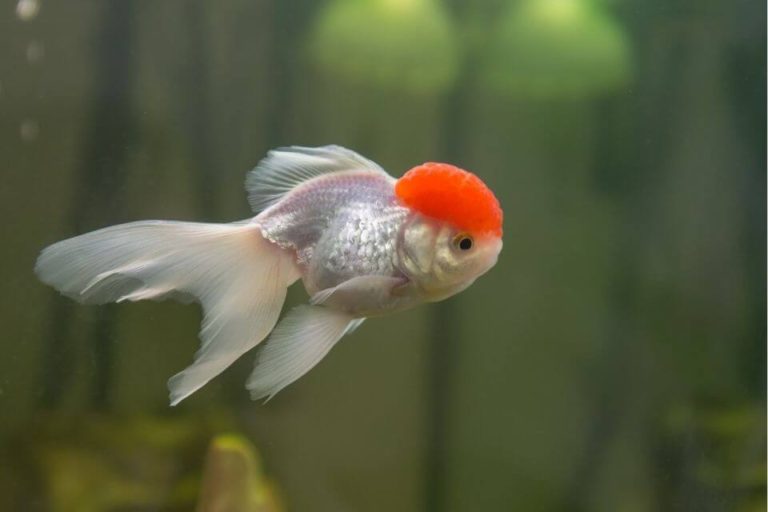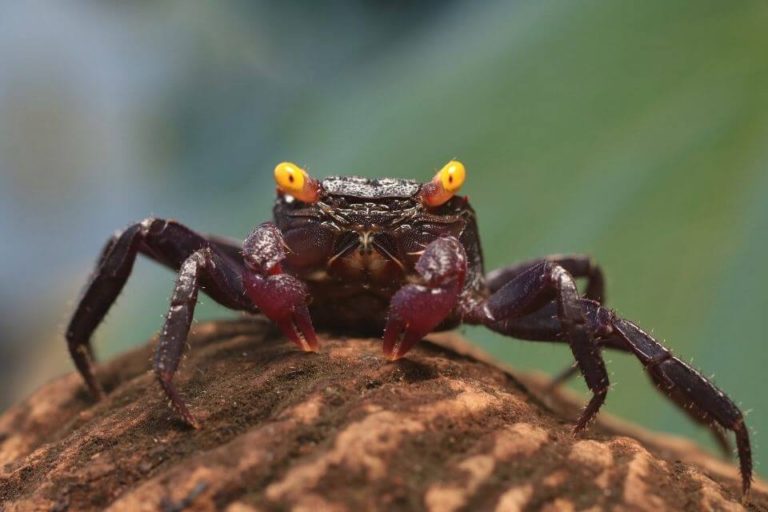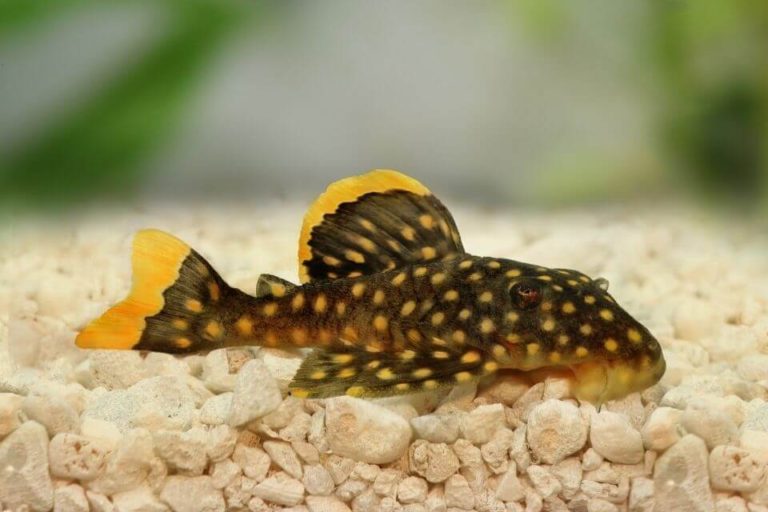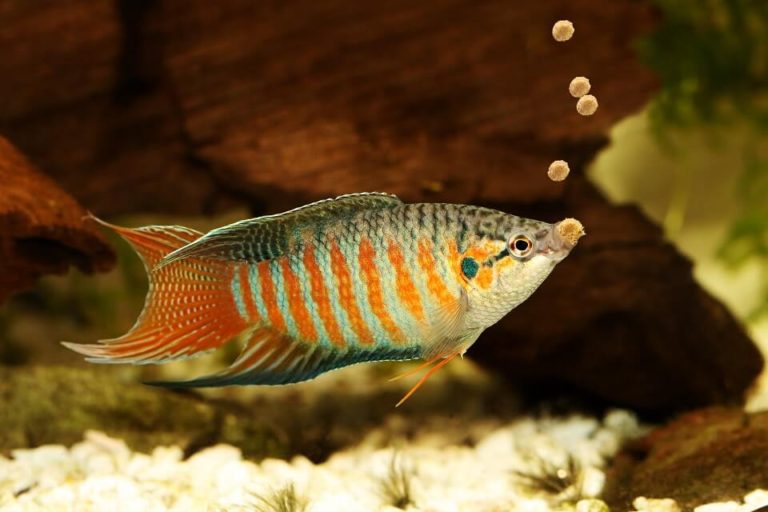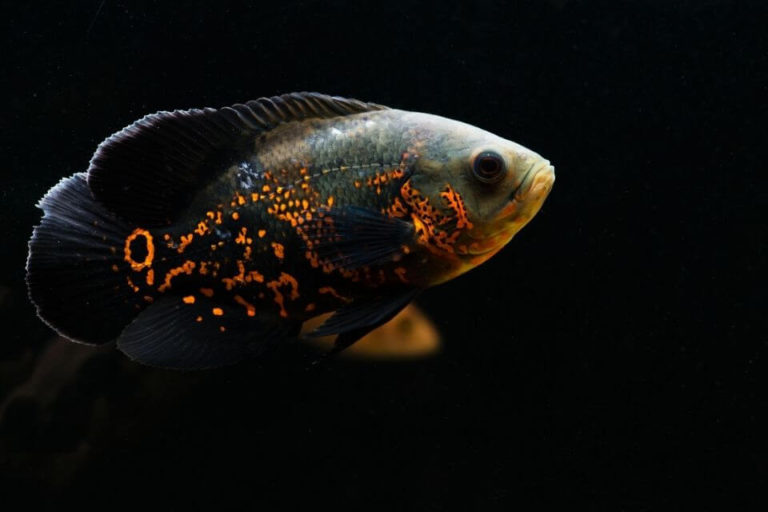Blue Phantom Pleco Care and Species Profile: Size, Lifespan, Diet & More
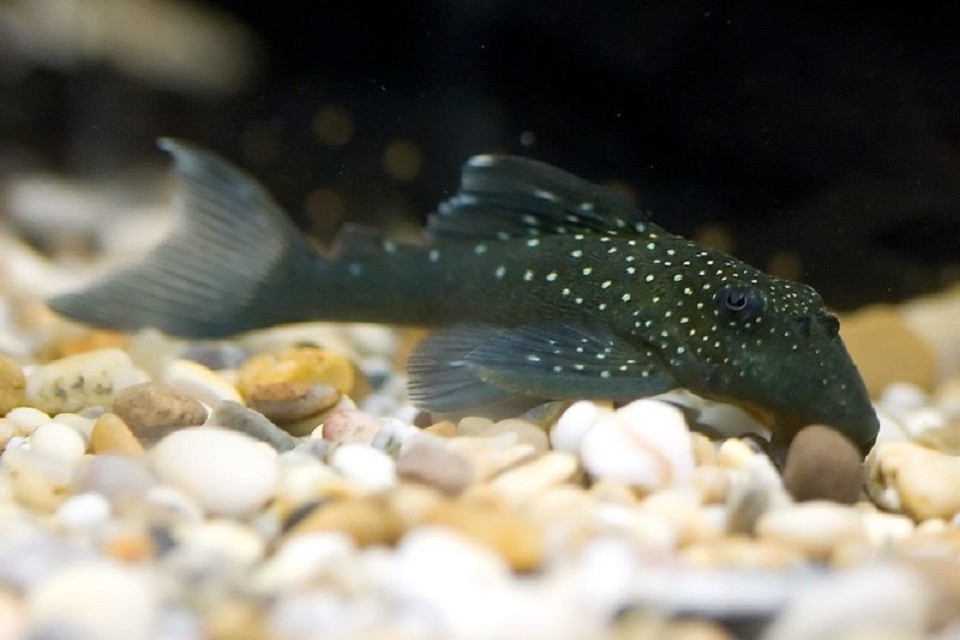
The Blue Phantom Pleco is a beautiful freshwater fish that belongs to the Pleco group of fish species. Plecos are part of the catfish family hence for the attractive armors and suckermouths. It was named Blue Phantom because of its bluish color and pretty white spots.
Of all the different species of Pleco fish, the Blue Phantom fish resembles the Green Phantom Pleco. However, they are some key differences between the fish, including their colors.
The Blue Phantom Pleco is cobalt blue, while the Green Phantom Pleco is neon green.
All the information needed to understand the Blue Phantom is stated below and explained in great detail. Understanding the nature of Blue Phantom Pleco helps provide the necessary care for it.
| Quick Facts: | |
|---|---|
| Common Names : | Blue Phantom Pleco, Pleco L128 |
| Origin : | Orinoco River in Venezuela |
| Family : | Loricariidae |
| Scientific Name : | Hemiancistrus Specie L128 |
| Care Level : | Medium |
| Temperament : | Peaceful to semi-agressive |
| Social : | Community friendly |
| Diet : | Omnivores |
| Size (average) : | Up to 7.5 inches |
| Lifespan : | Up to 8 years |
| Breeding : | Egg layer |
| Minimum Tank Size: | 20 gallons |
| Tank Environment : | Freshwater, gravel or fine sand substrate, Tall aquarium plants, rocks, caves, and driftwood. Medium lighting |
| Temperature : | 70 - 78 °F (21 – 26 °C) |
| Water Hardness : | 8 – 12 dGH |
| Water pH Level : | 6.0 - 7.0 |
Blue Phantom Pleco Overview
The Blue Phantom fish belong to the Loricariidae family and it is also known as L128 according to Pleco naming standards.
Some describe its color as dark blue, while others say it is cobalt blue. They have white spots around the skin that make them more attractive.
They can grow up to a maximum of 7.5 inches and the life expectancy is from 5 to 8 years under optimal care conditions. Blue PhantomPleoc should be fed with the high-nutrient omnivore diet.
It has a moderate care level and is known to be semi-aggressive. It isn’t very pleasant, especially in other pleco fish, but it is compatible with other freshwater fish. Since they are freshwater fish, they can only reside in a freshwater tank.
The minimum tank size that can house the Blue Phantom Pleco fish is 20 gallons fish tank and this is for one fish.
Below we go into detail on the nature of the Blue Phantom Pleco fish.
Blue Phantom Pleco size
Blue Phantom Pleco size can be up to 7.5 inches long as it is healthy. One way of knowing that a pleco isn’t healthy is by measuring its size. It is unhealthy if it is between the ages of 5 to 8 years and hasn’t attained at least 7 inches.
They tend to grow very fast if fed well. The tank owner needs to feed it high-nutrient food, which will promote its growth.
Blue Phantom Pleco Lifespan
The highest lifespan of a Blue Phantom Pleco ranges between 5 to 8 years, depending on how you take care of them. But some have lived for a decade long.
If it is fed regularly and lives in the recommended water and tank, it will live longer. The freshwater fish lives longer when in captivity than if they were to live in the wild.
Blue Phantom Pleco Appearance and Colors
Different plecos come in different colors; however, most are dark blue and have white spots. It wouldn’t be out of the ordinary to see a Blue phantom fish that is lighter than the standard dark blue color.
Their shimmery armors assist them in hiding and maintaining good shape. Additionally, their mouths are wide, protruding to resemble a sucker.
They have a narrow body that is an antithesis to their mouths. Through this shape, they can feed well through sucking. They are good at digging, thanks to their sturdy abdominal and pectoral fins.
Unlike most fish, the Blue Phantom Pleco fish doesn’t have scales; instead, they have thick protective plates.
Behavior and Temperament
Blue Phantom Pleco fish obey the law of opposites attracts quite literally. When placed among other plecos, they can be very aggressive. They view other plecos as threats to their territory.
Once you introduce other Plecos, they will be violent towards them as they try to defend themselves. However, they are placed with fish other species, then they are very peaceful.
The Blue Phantom Fish originated from Venezuela, specifically in the Orinoco River. The river flows quite rapidly. Therefore, it isn’t a surprise to see that even though it is tranquil in the presence of a different type of fish, they are very active. It is hard to find it dormant.
Blue Phantom Pleco Care
An amateur can take care of the Blue Phantom fish. The following is a list of things needed to maintain a Blue Phantom fish:
- A minimum of 20 gallons tank with a tank lid and stand.
- A premium quality filtration system that can easily be replaced
- An aquarium heater
- A bubbling device together with tubing and air pump.
- A water testing kit
- Soft pebble substrate
- Boulders and driftwood
The Blue Phantom fish is a freshwater fish native to the turbulent Rio Orinoco River water situated in Venezuela. Therefore, they do well in a stream flowing in the tank they are in.
They require an average to the easy level of care, as mentioned earlier. Algae should be left to build before cleaning the tank because they eat the algae.
Since they eat a lot of food, they produce a lot of waste; therefore, you should clean the tank regularly. It is important to know that they take a long to acclimatize to new environments.
They do fair well when placed in large, well-established aquarium tanks because most established aquariums have ample and are planned.
However, this shouldn’t discourage anyone wishing to keep a Blue Phantom Pleco so long as the habitat replicates its natural habitat, the pleco will do well.
– Blue Phantom Pleco Tank Size
The minimum tank size for one single pleco is 20 gallons fish tank. Since they grow up to 7.5 inches long and are active, investing in a large water tank is advisable.
If you keep them with other fish species, you should consider a tank of at least 75 gallons to provide ample space for them to move around freely as they are active bottom dwellers.
– Blue Phantom Pleco Tank Setup
Blue Phantom Pleco tank setup should resemble, as much as possible, the pleco’s natural streamy tropical habitat. The conditions are stable warm waters, either rounded or sand substrate, highly dissolved oxygen waters.
In addition to all these conditions, the tank should house live plants and tree roots. Even though a streamy habitat isn’t a do or die requirement, some elements need to be preserved.
These elements are smooth but large rocks, wood roots, and driftwood.
The Blue Phantom Pleco is nocturnal. Hence, the tank needs to be as far away as possible from natural sunlight. Some areas in the aquarium tank should be shaded because the pleco can occasionally be a hermit.
Therefore, shaded or dark areas will help when they are in the mood to be away from the world. Otherwise, most areas should receive filtered lighting.
They can live comfortably in a mild current so long as the high-quality water has a state-of-the-art filtration system. The system is used in providing high-quality water.
The water in the Rio Orinoco River is clean and highly oxygenated. Therefore, the water in the tank should be of the same standard. Failure to maintain this high standard can reduce life expectancy as ill.
Since the Blue Pleco fish is in nature, there should be sufficient space, especially at the bottom, to scavenge. The soft rocks and sands come in handy because if they were rough, the fish is sure to injure itself while on its scavenging spree.
Aquatic soil would not work because the fish love to dig, resulting in a mess. The most suitable decorations to use are caves, tall rocks, and boulders. The driftwood used should be used in moderation.
Live plants should be placed securely on the tank because they can easily be uprooted by the fish, causing a mess.
– Water Conditions and Parameters
You need a thermometer and water heater because this type of pleco fish is very sensitive to the temperature of their surroundings. The ideal temperature range for a Blue Phantom Pleco is between 70 degrees and 78 degrees Fahrenheit.
As you can tell, they prefer a moderately warm surrounding to be cold or very hot water. The water needs to be lukewarm and fresh to enjoy and maintain a healthy status.
The ideal acidity of the water should be between 6 and 7 Ph. They don’t do well in a high alkaline environment. They are very sensitive when transferring them to a new environment any misstep when moving and it can be stressed and become sick.
– Suitable Aquarium Plants
The plants most suitable to use are Anubias and Amazon Sword because they have strong rooting systems that prevent your fish to uproot them through digging.
These aquarium plants also provide good hiding places when the Blue Phantom wants to hideout.
– Common Diseases and Prevention
The common diseases that affect the Blue Phantom Pleco fish are Dropsy, Ich, Fin rot. Dropsy is a very common disease that affects aquarium fish. Dropsy causes swelling of the belly.
It may be hard to spot it, especially in females. They all attack the fish if both the tank and fish aren’t well cared for.
Since the goal is usually to preserve the fish’s life, it is better to prevent the occurrence of the diseases because the fish will be sick from the above diseases and later on die.
Once you spot the diseases’ symptoms, you need to change the water in the tank immediately. Afterward, you need to administer antibiotics to them for quick recovery. Over-the-counter medications are fine for so long as they aren’t severely sick.
There are no particular treatments to avoid. While they are sick, you need to give them fresh food. If you have plenty of fish in the tank, a hospital should be set up as a precaution.
The fish ailing will be in quarantine in this tank to prevent the disease from spreading to other healthy fish.
Blue Phantom Pleco Diet and Feeding
The Blue Phantom Pleco fish is omnivorous. Therefore, they can eat both vegetables and meat. The amount of algae they eat in the tank affects the frequency and amount of supplemented food.
It is important to remember that this pleco fish ought to be directly fed through bottom feeders three times a week, but this isn’t to say that the number of times they are fed is set in stone.
The hobbyist should observe visual cues such as the stomach’s girth before feeding it.
Since they are nocturnal animals, they need to be fed in the evening once they have woken up. The food will give them the strength needed to scavenge. They can go a maximum of seven days without being fed, but this will harm their health.
In the meat-based diet, they can eat shrimp, daphnia, and bloodworms, while in the vegetable-based diet, they consume a wide variety of them, such as spinach.
The best type of sustenance food is either a sinking wafer or a portion of solid pellet food. Blood worms, Cucumbers, and Dried Shrimps are an addition to promoting good health.
While in the Rio Orinoco River, the blue phantom fish fed on different types of foods. Crustaceans and dead decaying matter were one of them.
However, when in a different environment, they can eat bespoke wafers for bottom feeders. Additionally, they eat leftover foods that are in the aquarium substrate.
Gender Differnces of Blue Phantom Pleco
The male Blue Phantom Pleco is longer and skinnier than the female Blue Phantom Pleco. The female has a round body shape. The female Blue Phantom Pleco’s abdomen is longer than the rest of the body when observing from the side.
Origin and Distribution
The Blue Phantom originated from Venezuela, more specifically in the northern parts of the Rio Orinoco River. The Orinoco River is turbulent, thus explaining why the blue phantom fish needs a stream-like environment.
The low-nutrient river is filled with high levels of oxygen. Species that can trace their origin from the northern parts of the river are the darkest, while located further down the south are lighter.
Blue Phantom Pleco Breeding
Breeding you Blue Phantom Pleco fish in captivity is a difficult process. Very few have managed to breed them successfully. We need a female and male Blue Phantom Pleco to co-exist for breeding purposes.
Nonetheless, a few precautions need to be known before placing Blue Phantom Pleco fishes together.
There should be only one male in the aquarium tank with a few females. Placing two or more Blue Phantom Plecos males will create a hostile environment as the males will be belligerent towards each other.
It is not enough to leave the mixed genders in one pond to breed. The successful breeding was a result of the use of manufactured hormones.
To know if the breeding was successful, you need to watch the female closely. She will grow a bigger stomach because the eggs are developing. The female will also be situated in peaceful and cool places undisturbed as they rest.
Blue Phantom Pleco Tank Mates
The Blue Phantom fish gets along with almost all freshwater fish of similar size. Hence, they can be placed in an aquarium with various species, and they would be able to co-exist peacefully.
Nevertheless, if you have an assortment of fish species, you should provide a place for them to hide and secure. It comes when they would prefer to be alone than to be around other fish. The rocks and plants would provide a nice spot for them.
Blue Phantom Pleco fish don’t do well with other Blue Phantom Pleco fish as they will be very defensive. People like to put the Blue Phantom Pleco with fish species that love slow-moving waters.
Also, they do well with semi-aggressive fish species, but it is better to put them with other peaceful varieties. Schooling fish species are good Blue Phantom Pleco tank mates because they can form a community with them.
Fish species to keep as Blue Phantom Pleco tank mates are:
- Tinfoil
- Odessa Barb
- Hatchet Fish
- Tiger Barb Fish
- Swordtail Fish
- Dwarf Gourami
- Zebra Danio
- Glass Catfish
- Pictus Catfish
- Clown Loach
- Black Ghost Knife Fish
It is important to note that Pleco species are scavengers in nature. Mate sure you have a spacious tank when keeping them in a community.
Questions and Answers
Is Blue Phantom Pleco Aggressive?
The blue pleco fish are only aggressive towards their kind. They are very protective of their territory, and introducing another blue pleco will trigger them to be violent. But if they are paired with other species, they are very peaceful.
Will Blue Phantom Pleco Eat Shrimp?
Yes. The blue phantom eats shrimps. If the pleco is young and therefore small in size, the shrimps should be in bristle pieces for easy consumption.
Is Blue Phantom Pleco Hardy?
Blue Phantom takes some time to get familiar with a new environment. However, after they have acclimatized to the environment, they are hardy but not as hardy as other types of plecos.
They become stressed when placed in dirty water, thus changing the water regularly.
To help in the acclimation, the hobbyist should use the drop process. The Blue Phantom should be in the dark tank for 45 minutes to get used to the environment.
When adding them into the aquarium, the lights should be off and kept this way for a maximum of 30minutes
How Much Does a Blue Phantom Pleco Cost?
A Blue Phantom Pleco costs between $50 and $150. They are expensive because they are found in limited areas and breeding is not that easy. More specifically, they are found in Puerto Ayacucho’s downstream area.
You can buy Blue Phantom from local pet stores or online.
Final Thoughts
The Blue Phantom Pleco does well in medium or large aquarium tanks. Their progress will depend on whether or not they are in a good environment. They aren’t as high maintenance as many would presume, as they only require a moderate level of care.
The only thing that can tip off this fish is if the water used is poor quality. It is advisable to perform frequent water changes. They do exceptionally well when availed with many hiding places and a warm, strong current.
Anyone can keep a Blue Phantom Pleco so long as they keep everything written about them in mind when taking care of them.



